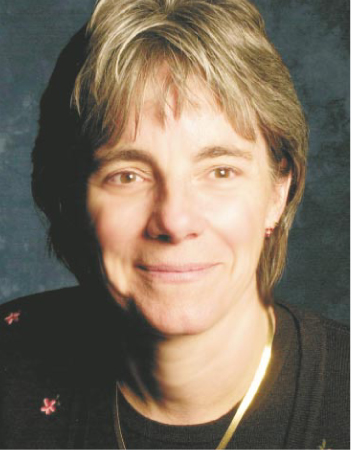Seestrom Is First woman to Lead Los Alamos Physics
DOI: 10.1063/1.1359705
Susan Seestrom took the reins of Los Alamos National Laboratory’s physics division on 21 November. She succeeds John McClelland and Don Rej, who served consecutively as interim directors after Peter Barnes stepped down in October 1999. Seestrom is the first woman to hold the job.
A lab insider, Seestrom first came to Los Alamos in the late 1970s to conduct research for her PhD in nuclear physics, which she earned from the University of Minnesota in 1981. She’s been there ever since. Her recent research has focused on developing new sources of ultracold neutrons. She has served in various management roles, most recently as acting deputy director of the physics division.
Research in the physics division is sometimes described as covering three plasmas—thermonuclear, quark–gluon, and blood, for magnetic and inertial confinement fusion, high-energy research, and biological physics, respectively. The division has about 350 scientists and technicians. Roughly 60% of its $60 million annual budget goes to weapons research. As one of three US weapons labs, Los Alamos plays a key role in science-based stockpile stewardship, the Department of Energy’s program for maintaining nuclear weapons since test explosions were banned in 1992.
“We had a well-defined role in the days of underground testing,” says Seestrom. “When that went away, our role became less clear. I want to define a clear stewardship role for the division, so that we have an organization that is really synergistic with the mission of the lab.” She also wants to improve technology transfer from the division to industry.
Researchers at the lab see Seestrom as a beacon for an upswing in morale. They tick off a list of recent woes: the espionage charges against and nine-month imprisonment of physicist Wen Ho Lee; the missing hard drives with nuclear secrets; the fire; a cut last year in flexible research funding. “The lab has been through a rough time of it in the last 18 months or so,” says Richard Hughes, who heads the physics division’s quantum information research team and served on the selection committee for Seestrom. “These things send a message to people in the outside world to look before thinking of Los Alamos. The big worries are the low morale of people here, and the ability to attract the best people from outside. I think Susan has what it takes to do both.”
“She’s a good scientist. She knows the laboratory really well. She’s a good leader,” agrees physicist Jane Nordholt. “I’m really happy that women are getting into management more at the lab.”
“It’s clear that there’s a sense of a glass ceiling in the troops,” says Seestrom. “Many women whom I’ve never met have sent me notes. Without having done anything, my being here makes a difference to them—subtle cultural things sometimes get in the way of women succeeding. I hope to set a model that you don’t have to just have a job—you can have a life.”
“During the deliberations, it really didn’t come up that she is a woman,” says Michelle Espy, a Los Alamos physicist who served on the selection committee. “But afterwards, I went into the conference room where photos of previous directors hang”—Robert Rathbun Wilson, who headed the division during the Manhattan Project, Jay Keyworth, science adviser to President Reagan, and Los Alamos’s current director, John Browne, among others—“and I thought, Wow, Sue’s picture will go here!”

LANL

More about the Authors
Toni Feder. American Center for Physics, One Physics Ellipse, College Park, Maryland 20740-3842, US . tfeder@aip.org
